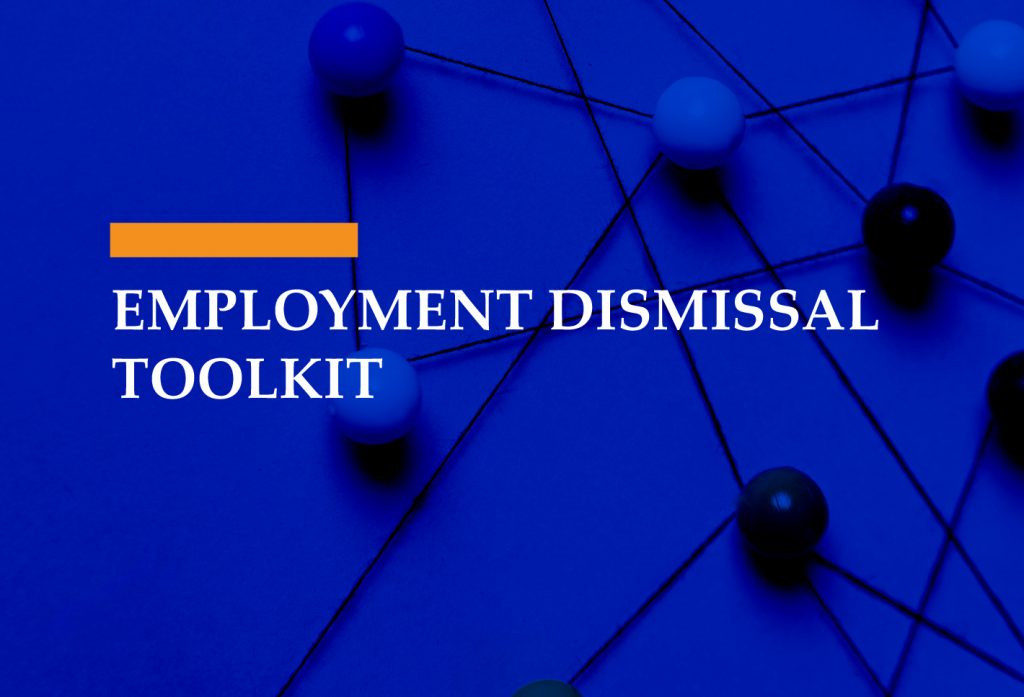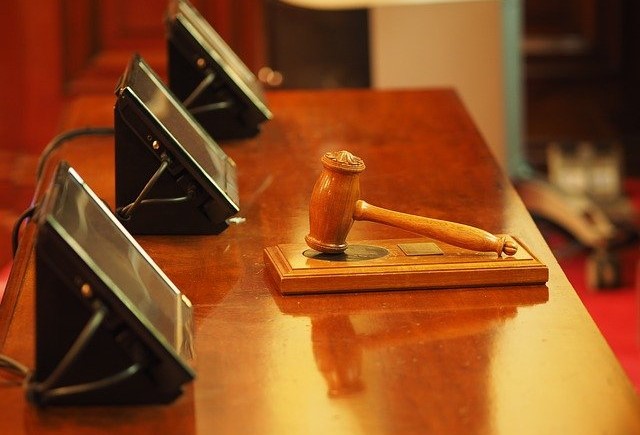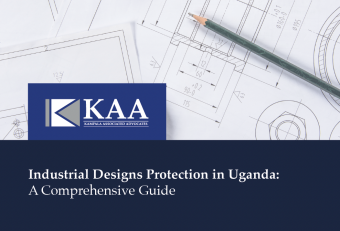Introduction
This toolkit is a comprehensive resource designed to assist employers in navigating the dismissal procedures outlined under the Employment Act, 2006. It aims to provide a clear understanding of the basic dismissal guidelines, ensuring compliance with employment laws while protecting the rights of both employers and employees.
Our aim is to empower employers and HR professionals to navigate dismissals with clarity, fairness, and in full compliance with employment laws. By utilizing this toolkit, employers can potentially minimize legal risks, maintain positive employee relations, foster a supportive work environment, and be equipped with the necessary knowledge and tools to execute dismissals in a legally compliant manner.
This toolkit highlights the major steps and action points involved in dismissal processes including;
- Suspension
- Investigations
- Disciplinary Hearing
- Appeals
| 1. SUSPENSION | |||
| No. | Mandatory/Necessary Step | How & Why it is done | Action Points |
| 1. | Review the situation | · The employer should assess the circumstances leading to the need for suspension and ensure that they are reasonable grounds. | · Suspension letter
|
| 2. | Consult relevant policies and Employment Agreements. | · The employer should refer to the organization’s policies, employment contracts and any other relevant documents such as the Operations Manual, Human Resource Policy and so on to understand the procedures and conditions surrounding suspensions. | |
| 3. | Communicating the suspension and the reason(s) thereof to the employee | · Section 63(1) of the Employment Act, 2006 provides that whenever an employer is conducting an inquiry which he or she has reason to believe may reveal a cause for dismissal of an employee, the employer may suspend that employee with half pay.
· Schedule a meeting with the employee to communicate the decision to suspend them pending investigation. · The reasons for suspending the employee pending investigation is majorly to protect evidence, preventing recurrence of the alleged conduct and preserving employee relations among others. |
|
| 4. | Provide Written Notice to the Employee. | · Follow up the meeting with a written suspension letter or notice. This letter should as well outline the reasons for the suspension and communicate the employee’s responsibilities during the suspension period.
· Paragraph 1 (10) of Schedule 1 of the Employment Act, 2006 provides inter alia that the employer shall inform employees of their rights when accused of any infringements and of the procedures that shall be followed in investigating and dealing with complaints |
|
| 5. | Observe the time limits | · Section 63(2) of the Employment Act, 2006 provides that any suspension under the section shall not exceed four weeks or the duration of the inquiry, whichever is the shorter.
· Where the duration of the given inquiry is likely to exceed the four weeks, the suspension may be extended in exceptional cases but with full payment of all benefits to the employee. |
|
| 2. INVESTIGATION | |||
| No. | Mandatory/Necessary Step | How & Why it is done | Action Points |
| 1. | Initiate a fair and thorough investigation into the alleged misconduct or violation | · Firstly, define the scope and plan the investigation.
· Confirm if the complaint is in relation to a company rule, policy, or behavioral standard. · If so, was the employee aware of the transgressed rule, standard, or policy or could the employee be reasonably expected to have been aware of it? (You cannot discipline an employee for a breaking a rule if he was never aware of the rule in the first place.) · Gather and preserve all the necessary evidence. · Identify and interview witnesses, and assess their credibility and reliability. |
· Investigation report
· Obtain witness statements
|
| 2. | Maintain confidentiality. | · Throughout the entire process, maintain confidentiality and treat all parties with fairness. Stress the importance of confidentiality to all the parties involved in the investigation.
· Depending on the nature of the allegations, it may be helpful to invite the concerned employee to either make a statement or attend an Investigative hearing. Please note, the investigative hearing should be expressly indicated as such and should not be treated as a Disciplinary hearing. |
|
| 3. | Review the findings. | · Analyze and review all the relevant findings to ensure that there are no gaps or inconsistencies, and rectify the same if available. | |
| 4. | Prepare an investigation report. |
|
|
| 5. |
|
||
| 3. DISCPLINARY HEARING | |||
| No. | Mandatory/Necessary Step | How & Why it is done | Action Points |
| 1.
|
Initiate the hearing as soon as possible | · Paragraph 2(1) of Schedule 1 of the Employment Act, 2006 provides those disciplinary procedures shall be implemented without unnecessary delay, after proper investigations have been completed.
· Charges must be clear. Employers should advise accused employees in advance of the precise charge or charges they are required to answer. |
· Original complaint received in writing
· Invitation letter to the employee · Attendance record · Disciplinary hearing minutes · Disciplinary Committee Report · Disciplinary hearing outcome communication/ Notice to employee |
| 2. | Notify the employee of the disciplinary hearing and remind them of their rights pertaining the same. | · Paragraph 2(2)(a) of Schedule 1 of the Employment Act, 2006 provides inter alia that an employer shall at the first opportunity inform, preferably in writing, the employee of what is happening, in a form and language best understood by the latter and, remind the employee of his or her rights to prepare his or her explanation and appeal against any decision.
· The written notice to the employee should as well indicate the date, time and location of the hearing. The employee should be given reasonable time to prepare his or her explanation as provided for under Section 66(3) of the Employment Act, 2006. · The letter should also state the specifics and particulars of the alleged misconduct or violation. Paragraph 1(11)(a) of Schedule 1 of the Employment Act, 2006 provides that the employer shall ensure that the employee is fully aware of any complaints made against him or her and of the nature and consequences of any proceedings taken against him or her · The employee should be informed of the evidence that will be used in the hearing for example, the investigation report should be availed to him. · The employee should be sufficient time to prepare a defense. The recommended minimum is five (5) days. |
|
| 3. | Prepare the hearing panel. | · The panel should be competent and impartial so as to guarantee the employee just and fair treatment during the process as guaranteed by Article 42 of the Constitution.
· For example, the person(s) accusing, witnesses, and any other biased individuals should not form part of the panel. |
|
| 4. | Follow a structured process | · The accused employee should be given the opportunity to plead to the charges.
· Complainant puts their case first, leading evidence and calling witnesses to testify
· The panel can then pose any questions and seek clarification on any unclear issues. · Disciplinary Committee should adjourn the meeting and prepare minutes of the Disciplinary Committee, which should be typed and signed by the Committee and preferably, the accused as well. |
|
| 5. | Communicate the decision and monitor the employee accordingly. | · The tribunal decides on guilt or innocence based on the evidence presented by both sides and on the balance of probability – which story is more likely to be true? That of the complainant or that of the accused? That is the basis on which guilt or innocence is decided
· Inform the employee of the disciplinary decision in writing. · Communicate the right to appeal if applicable and provide guidance on the next steps. |
|
| 6. | Document | · Maintain appropriate records for future reference or potential legal considerations. | |
| 4. APPEALS | |||
| No. | Mandatory/Necessary Step | How & Why it is done | Action Points |
| 1. | Communicate the possibility of an appeal to the employee and his rights during the same. | · Paragraph 1(11)(b) of Schedule 1 of the Employment Act, 2006 provides that the employer shall ensure that the employee is fully aware of the form the disciplinary proceedings shall take, including the possibility of appeals.
|
· Appeal Notice
· Appeal Submissions · Appeal Committee decision |
| 2. | Determine the appellate body | · Identify the appropriate authority and provide them with the necessary documents.
· The appellate body should be an impartial and independent body from the hearing panel. |
|
| 3. | Establish timelines | · Ensure that the set timelines allow the employee sufficient time to prepare their case. | |
| 4. | Conduct the appeal in a structured and just manner. | · Ensure that the appeal hearing is conducted in a fair and unbiased manner following the principles of natural justice.
· Take in account the alleged grounds of appeal and ensure that the irregularities, if any, in the first hearing are dealt with. · Depending on the nature of the grounds in appeal, determine the appropriate appeal procedure. The appeal procedure could either be a documentation review or in some instances, can include a hearing or presentation of the arguments in support of the grounds. |
|
| 5. | Communicate the Appeal Decision. | · Communicate the appeal decision to the employee in writing and provide clear reasons for the decision.
· Elaborate whether the disciplinary action will be upheld, modified or overturned and any associated instructions or next steps. |
|
Caveat
The contents of this article are intended to convey general information only and not to provide legal advice or opinions. The contents of this article/ website, and the posting and viewing of the information on this article/ website, should not be construed as, and should not be relied upon for legal advice in any particular circumstance or fact situation. An Advocate/ attorney should be contacted for advice on specific factual legal issues



